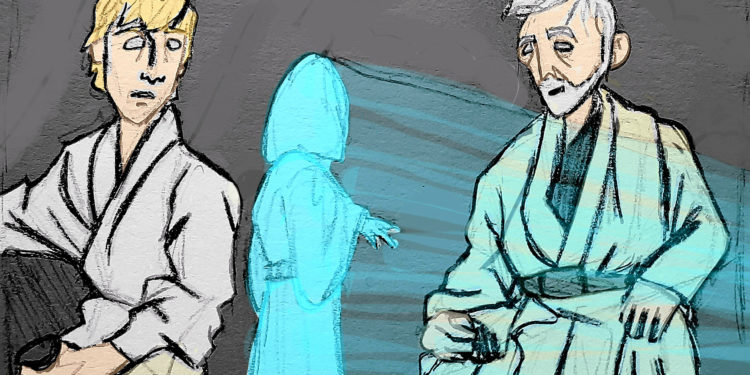By Will Briscoe
This film review is an opinion piece submitted to the Samford Crimson.
Released in 1977, “Star Wars: A New Hope” is a thrilling sci-fi adventure that follows Luke Skywalker, who begins as an ordinary moisture farmer on the planet of Tatooine. Through an unexpected adventure, Luke eventually joins the Rebellion in the fight against the tyrannical Galactic Empire. Throughout the story, Luke meets Ben Kenobi, also known as Obi-Wan, and must learn to use the Force and wield a lightsaber if he is to restore balance between the light and dark.
Director George Lucas was a major part of bringing the Star Wars series to life on screen. Lucas worked to convey the stories he imagined through a multitude of ways, such as the film’s soundtrack, effects and budget. Star Wars may be a household name today, but it wasn’t always that way. There was a time where Star Wars was just George Lucas’ idea for a story, meaning that the first Star Wars film, “A New Hope,” did not have a very big budget. The financial limitations of the film meant that Lucas had to get creative telling the story of Luke Skywalker.
With a small budget comes unknown actors. Before Star Wars, Mark Hamil, Harrison Ford and Carrie Fisher (Luke Skywalker, Han Solo and Princess Leia, respectively) were not well known actors. Star Wars gave each of them their “big breaks.” The low budget allowed each of these actors to prove themselves and make their names known in the film industry.
Because of this, all the actors involved were invested in the film and believed in its potential. They all put their trust in Lucas’ vision.
One of the most important components to telling the story of A New Hope was the mise-en-scene and visual effects. Sci-fi films have to look realistic in order for them to be immersive and believable, and Lucas accomplished that by largely using practical effects. One example of this is the lightsaber, a key prop in the film that was created with a rotating rod covered in reflective tape to make it light up. This was improved in post with the addition of color to the blade, but it was still largely a practical effect.
Lucas used practical effects to maintain realism throughout the film, but he also pushed the boundaries of technology in integrating digital visual effects into the film. The film looks amazing visually, and the effects still stand up well today, but visuals are nothing unless accompanied by audio.
The music and sound effects for Star Wars: A New Hope are what really brings it together. Blaster shots, alien creature sounds, lightsaber ignitions and other sounds enhance the believability of the visuals. The other major type of audio in the film is its soundtrack, composed by John Williams, which is a huge part of the story. The soundtrack has now become iconic, inseparable from Star Wars itself. The music Williams wrote follows the film perfectly, and tells the audience whether something happening is good, evil, mischievous or playful. The music was composed specifically for the movie, and is an invaluable part of its storytelling.
Overall, A New Hope is a fantastic film, which, despite its low budget, changed the way films are made today. Lucas pushed the boundaries of what technology was capable of and integrated an amazing soundtrack in ways audiences had never heard before. A New Hope is a must watch for its effects, sound, story and impact on the film industry.



